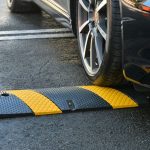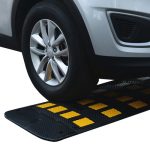Introduction to Car Stoppers
Car stoppers, also known as parking blocks or wheel stops, play a critical role in ensuring the safety and organization of parking areas. These devices are designed to prevent vehicles from rolling beyond a designated stopping point, thereby avoiding accidents, property damage, and enhancing overall traffic management.
Why Install Car Stoppers?
There are numerous reasons why the installation of car stoppers is essential in parking lots:
- Safety: They help prevent vehicles from inadvertently rolling into pathways, buildings, or other vehicles, reducing the risk of accidents.
- Damage Prevention: By stopping vehicles at the right spot, car stoppers help avoid damage to walls, landscaping, and other structures.
- Traffic Management: They provide a clear stopping point, which helps in organizing parking spaces and improving traffic flow within parking areas.
- Compliance: In many areas, the use of car stoppers is part of regulatory requirements for parking lots.
Types of Car Stoppers
Car stoppers come in various materials and designs, catering to different needs and preferences:
Concrete Car Stoppers
Durable and heavy, concrete car stoppers are a popular choice for permanent installations. They can withstand extreme weather conditions and heavy impacts, making them ideal for public parking lots and commercial spaces.
Rubber Car Stoppers
Made from recycled rubber tires, these stoppers are eco-friendly and provide a softer cushion upon impact, reducing potential damage to vehicles. They are also lighter and easier to install compared to concrete stoppers.
Plastic Car Stoppers
These are lightweight and easy to install. Plastic car stoppers are resistant to weather damage and chemicals. They are ideal for temporary settings or areas where the car stopper may need to be moved frequently.
Installation and Maintenance
Installing car stoppers is a straightforward process that can significantly enhance your parking area’s safety and organization:
- Select the appropriate spot: Ensure the car stopper is placed to effectively stop the vehicle without obstructing pedestrian pathways.
- Secure the stopper: Depending on the material, car stoppers can be bolted or glued to the ground for stability.
- Regular Maintenance: Conduct regular checks to ensure the stoppers are intact and have not shifted due to impact or wear.
Proper maintenance extends the lifespan of car stoppers and ensures they continue to perform their safety functions effectively.
Conclusion
Car stoppers are an essential investment for any parking area, offering significant benefits in terms of safety, damage prevention, and traffic management. They are available in various materials, each suited to different requirements. Choosing the right car stopper and maintaining it properly can vastly improve the effectiveness of your parking lot.
For more information about prices and to choose the best car stopper for your needs, visit Unimat Traffic today!



